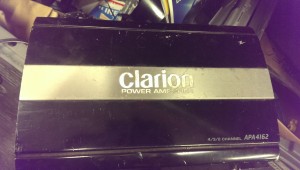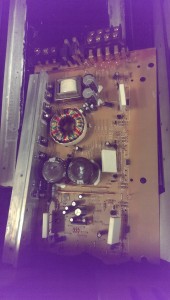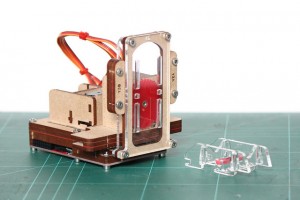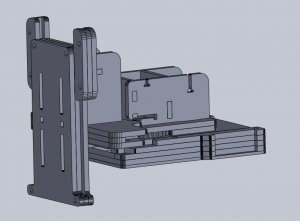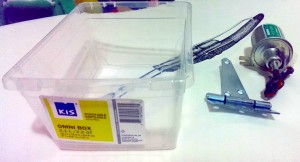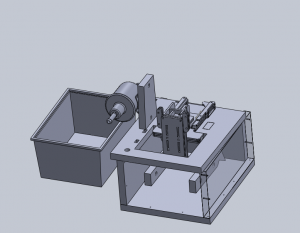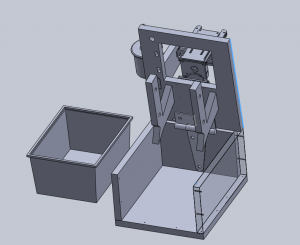I got handed a box of old gimbals from a movie set! I love gimbals!
Most of them are very slightly broken in very repairable ways.
I left, like, 5 for other people to fight over, and grabbed two for myself. One of them was in great shape, the other had some loose set screws and was missing an encoder. Fortunately the bin had some spare encoders!
Anyway. I stashed the good one, and focused on the brokenish one. Fixed it up, and started wiring up some drivers.
Here’s what the gimbals are like:
On the horizontal axis, there’s a DC motor with a gear meshing with the base. On the other side of the base gear, there’s another one connected to an optical encoder. There is also a photo-interrupter at one point along the rotation for calibration, I guess.
So the base can rotate freely in either direction indefinitely.
There is a slip ring that passes some wiring up to the vertical assembly. A similar system is in place for that motor, with an encoder tracking absolute position, but this one only has about 45 degrees of travel. There is a limit switch at either end, and a bunch of spare lines to be used for a camera or whatever.
This system is extremely easy to reverse engineer. All of the cables are out in the open, only disappearing into a slipring, where the maintain colour code.
So I starting breadboarding a motor driver. The brain is an old PIC that was in a bin somewhere, and I tried to find some driving transistors that would work. I burned a couple, and then took stock of what components I had on hand.
There was really no transistors around that fit the bill. I measured these DC motors to run at a good speed at about 8.5v and 500mA,so the power requirements are not low, when you’re trying to use 3906 BJTs or whatever.
That day ended there. I thought about the problem for a few days, then I came back and grabbed a 200w amplifier from the recycling bin and pulled it apart.
Inside it were 4 sets of 2SA1908 and 2SC5100 complementary BJTs. Perfect. Wired them up like so, and I have a gimbal driver.
Now I need to incorporate all of the sensors.


